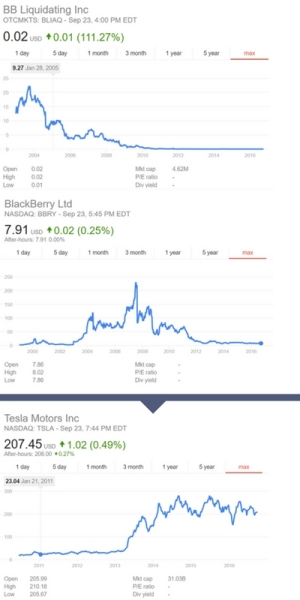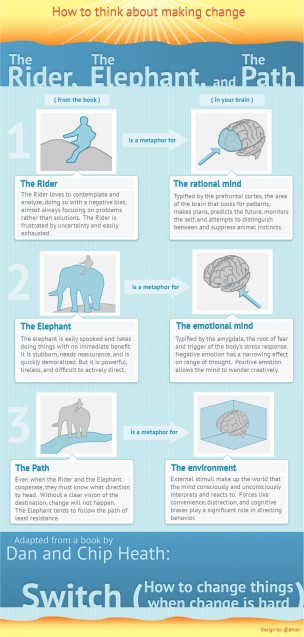When you think of great products, what do you think of? Products that have altered the way office jobs are done (excel, outlook, DropBox), or changed the way we interface with computers and technology (iPhone). Hearing from the VP of Product at Change.org recently was an opportunity to hear from the head of one of the most impactful products present in the market today, as evidenced by the impact on politics around the
globe. This presentation concerned the organizational tools that the team at Change.org used which led to the successful creation of an entirely new product line, circa 2011, to support a major shift in Change.org‘s business model.
The problem facing Change.org was that the revenue source had been a pure B2B model, which was no longer viable. Meaning that the grass roots petition platform that exists today did not exist. It became clear to the leadership of the organization that the business model was no longer feasible and had to be changed due to external market factors. Nick (VP of Product) led this effort from the product side and by using a few different concepts and methodologies successfully led the team to create the product line which made Change.org what it is today.
Problems Faced
The main internal problems that the company faced in developing an entirely new product line were the following:
- Speed of Delivery: Slow progress towards product completion
- Alignment: Getting the organization to work in the same direction
- Focus: Inability to make meaningful progress towards the goals that have been set
In order to confront this problem, there were a few different tools that were utilized by the team at Change.org that stood out to me. The team utilized some of the obvious efficiency levers, like automating tasks, but the strategic/organizational decisions are the most interesting.
Avalanche
As a previous product owner, one of the main frustrations regularly encountered was the inability to make forward progress due to all of the work needed to “keep the lights on” as it’s commonly phrased. Change.org made the conscious decision to focus solely on creating new features for a limited and focused period of time. That means no fixing of features that break (I assume other than P1’s). No devops working performance tuning. The whole organization fully focused on features.
One of the anecdotes shared that stuck with me was when it was mentioned that two college hires ended up working on a feature with the CTO. When you have an entire organization aligned behind a single goal, the ability to have people naturally move across, up, and down traditional power structures to achieve that goal seems to be a huge gain in creating innovative solutions. In addition to having more deliveries towards that single goal, the fact of the matter is that also comes the ability to see the pain points and what other teams are dealing with/issues they have.
Once the avalanche was done, Nick mentioned how devops had a much better understanding of the issues facing the application development team due to the fact that these devops developers had been doing feature work on the application. With this understanding they were then able to take these learnings and implement solutions that were able to make big impacts within the organization.
Shots on Goal
Anyone who has worked in an agile environment should be aware of this, but the affect that this had in the organization is worth mentioning. Specifically how deliberately this discussion was had with leadership. What Nick realized is that they were entering an entirely new market. Knowing this, he knew that it was unlikely that the organization would be able to accurately predict what features the new consumers would adopt in their product line without releasing many features and finding out what worked.
To that point, Nick organized his team to focus on flexing their speed muscle, as opposed to quality. Why deliver 10 perfect features when you could deliver 100 working features and have a much higher chance that the organization will strike gold? That strategy led to multiple success in the new product line, and an ability to conduct and test experiments faster than they thought possible under the previous paradigm which tried to achieve both speed and quality. When a team is focused on an immense effort, making demonstrable progress is usually one of the hardest/most difficult things. By focusing on speed, much faster feedback loops were enabled, with some of these features contributing to more than 20% revenue growth from the new product line.
OKR
Objective and Key Results methodology. Google used it. Intel used it, and countless other organizations. It’s not reasonable to think that an organization can deliver an entirely new product line and business model without complete organizational focus. Using OKRs Change.org was able to create a clear focus. As a result the teams were able to deliver on what is meaningful and impacts the bottom line, as opposed to working towards multiple objectives and goals that cause people to tug and pull against one another.
Working in multiple organizations, I’ve noticed that people don’t know what to do when their are too many goals. Having the ability to walk into a room and point to a single goal means that the organization is more easily able to coordinate and implement. When there is no clear goal unnecessary road blocks, and fiefdoms tend to spring up and lead to the organization pulling in different directions getting in front of the accomplishment of organizational goals.
Operating teams using the above three strategies worked for Change.org. Using some of these strategies has worked for other large and small organizations, and from what I’ve seen thus far in my career, could be used in many other organizations to transform the way products are delivered and impact the bottom line.









 What’s the core of the issue? IT is seen as a blocker and difficulty rather than an enabler. Why can’t things be simpler, or easier? Why does it take so long to do what I do now in excel with a few clicks? These are all valid questions. The easy answer? You don’t understand what we are accomplishing here and the implications of what you’re asking, delivered in an
What’s the core of the issue? IT is seen as a blocker and difficulty rather than an enabler. Why can’t things be simpler, or easier? Why does it take so long to do what I do now in excel with a few clicks? These are all valid questions. The easy answer? You don’t understand what we are accomplishing here and the implications of what you’re asking, delivered in an 